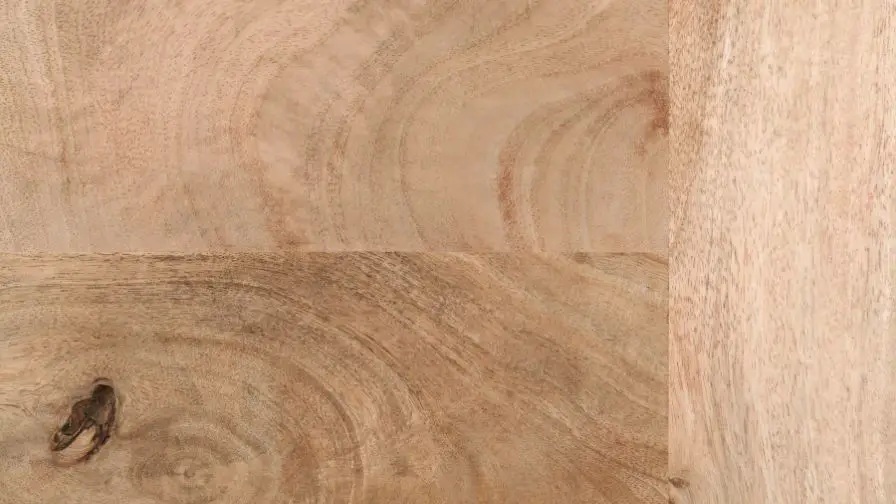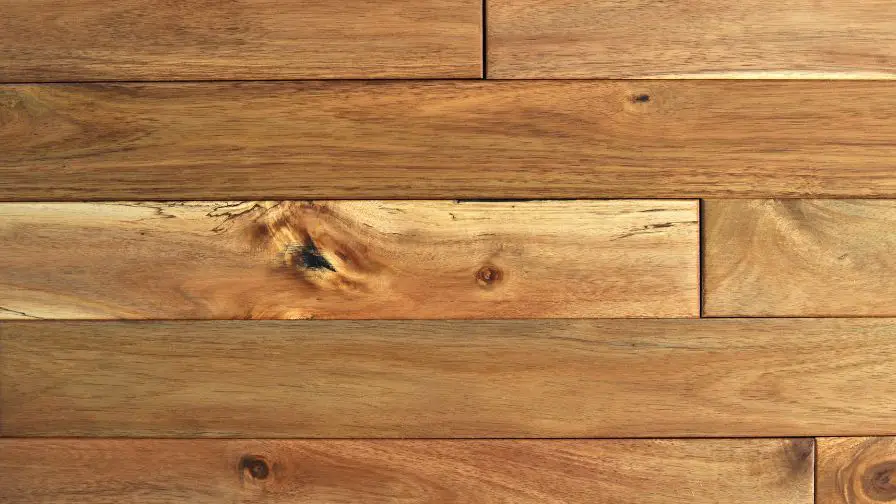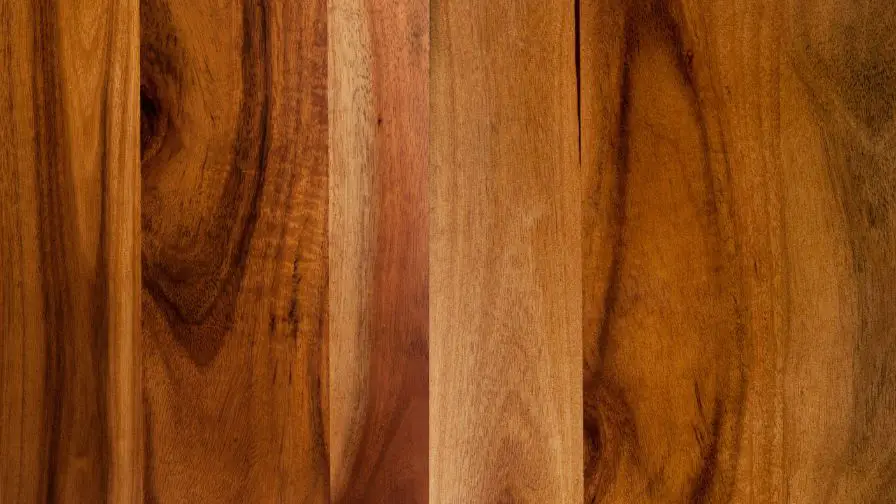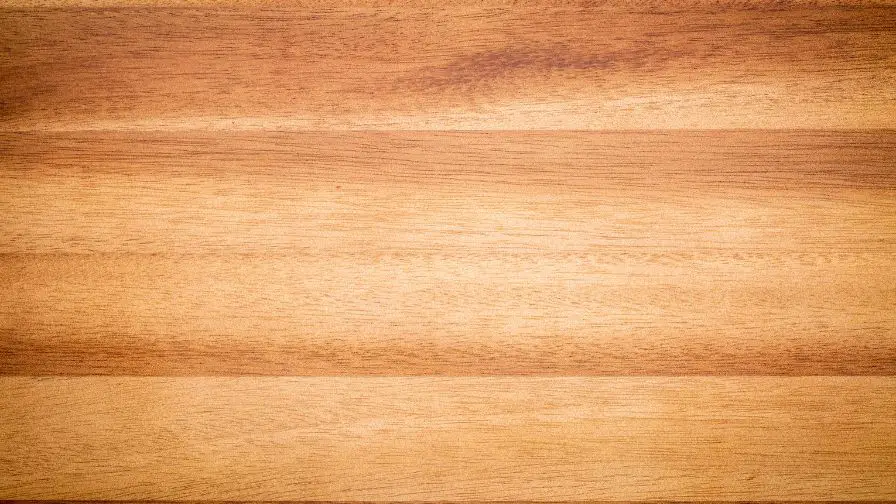
If you’re looking for a beautiful, unique wood to use for your next project, acacia may be the perfect choice. This type of wood is often used in furniture and flooring because of its distinctive look and durability. Acacia is also known for being resistant to water and insects, making it a popular choice for outdoor projects. However, before you can use this wood, it needs to be stained. In this blog post, we will provide tips for staining acacia wood so that you can get the perfect finish!
What Is Acacia Wood And Why Is It A Popular Choice For Projects?
Acacia wood is one of the most popular materials used for projects around the home. This type of wood comes from trees in the genus Acacia, which is native to tropical and sub-tropical regions across Africa, south and central America.
Acacia wood is unique because it contains natural oils which gives it an incredible strength, making it ideal for outdoor projects such as furniture, decking, flooring and more. In addition to its strength, acacia also has a beautiful grain with attractive colors ranging from golden yellow to deep browns. It’s also fairly easy to work with and its attractive colors make it a great choice for projects such as decorative boxes, serving bowls, cutting boards, trays and more.
It’s important to note that acacia is generally considered an exotic wood so the cost of purchasing this type of wood can be significantly higher than other woods like pine or oak. However, its strength and beauty make it a great investment that will last for years.
Overall, acacia wood is an excellent choice for any project. Thanks to its unique properties, this type of wood can be used in a variety of applications both indoors and outdoors. Its natural oils give it incredible strength and durability while its attractive colors are sure to enhance the look of any project. With its relatively high cost, acacia wood is certainly a great investment that’s sure to last for years. So if you’re looking for a beautiful and durable material that looks great in any room or outdoor space, consider acacia wood! You won’t be disappointed!
Tips For Staining Acacia Wood
Staining acacia wood can be a tricky endeavor, but with the right tools and techniques you can create a beautiful finish. Here are some tips for staining acacia wood to get the perfect look:
1. Start with Prepping the Surface: Before you begin any staining process, make sure you properly sand down your acacia wood. This will help ensure that the stain penetrates into the surface and creates an even finish. Make sure to use a finer grit sandpaper for best results.
2. Choose Your Stain: Acacia wood is naturally porous, so it absorbs stains more deeply than other woods. For this reason, you should choose a stain that is designed for floors or wood furniture. Oil-based stains are often recommended for acacia, as they provide longer lasting protection and better coloration.
3. Apply the Stain Evenly: Once you have chosen your stain, use a brush or rag to apply it evenly across the surface of your acacia wood. Make sure to cover all areas thoroughly and remember to wipe away any excess.
4. Let the Stain Dry: After applying your stain, let it dry for several hours before adding a sealer or topcoat. This will help ensure that the stain is fully absorbed into the wood and prevent any drips or streaks from forming on the surface.
With these tips in mind, you’ll be able to get the perfect finish for your acacia wood. With a little bit of patience and some elbow grease, you can create a beautiful stained finish that will last for years! Good luck!
Subscribe to Anavil Company Ltd
Can Acacia Wood Be Stained?
Yes, acacia wood can be stained! Acacia wood has a fascinating array of colors and grain patterns that make a great canvas for staining. When staining acacia, it’s important to remember: use a penetrating stain instead of a surface stain and always apply an even coat. Pressure-treated woods should never be stained unless they are thoroughly dried first.
Before staining, sand the wood with a medium grit sandpaper to create an even surface. To ensure that the stain is breathable and will last longer, apply a good-quality wood sealant after you’ve finished staining your acacia project. With proper preparation, Acacia wood can be stained successfully to bring out its natural beauty and grain patterns.
If you’re looking for a more dramatic effect, a glaze/stain combination will help you achieve the look you desire. This method involves applying a colored glaze over the stained wood which adds depth and character to your project. It’s important to note that this method requires careful attention to detail, as the glaze will not fill in any gaps or cracks that may occur during staining.
No matter what type of finish you’d like to create on your acacia project, proper preparation is essential for achieving a beautiful and lasting result. With the right techniques and supplies, you can easily transform your wood into something truly stunning. If you have doubts or questions about staining acacia wood, don’t hesitate to consult a professional for assistance.
Should I Stain Acacia Wood?
Acacia wood is a beautiful hardwood that can be given an even more stunning look with the right stain. Not only will it bring out its natural color and grain, but staining acacia wood also helps protect it from damage over time.
Before you get started, be sure to pick the right stain for your project. Acacia wood is a dense, hardwood that can handle a variety of stains from light and natural tones to deeper shades. In general, you should look for an oil-based or water-based polyurethane or varnish with UV blockers built in to protect the wood from UV rays.
So there you have it—staining acacia wood is a great way to bring out the wood’s natural beauty, and it adds an extra layer of protection against wear and tear. Just be sure to pick the right stain for your project—your acacia wood will thank you for it!
Is It Hard To Stain Acacia Wood?
Staining acacia wood can be a bit of a tricky process. The wood is quite dense and hard, which makes it more difficult to absorb the stain than softer woods. This means that you need to take extra care when staining acacia wood so that the finish looks even and smooth. If you want your project to look its best, it is important to take the time to properly prepare the wood before staining.
First, you need to make sure that the surface of the wood is completely clean and free from dust, dirt, or debris. You can use a vacuum or soft brush to remove any loose particles. After cleaning, you should sand down any rough spots on the wood until the surface is completely smooth.
Once you have prepped the wood, it is time to apply the stain. It is best to use a brush or foam applicator when staining acacia wood so that you can work the stain into all of the grain. You should also make sure to work in small sections at a time, allowing the stain to dry before moving on to the next area. This will help you achieve an even and consistent finish.
If you take your time and follow these steps, it is definitely possible to get a beautiful, professional-looking finish when staining acacia wood. Just remember that this type of hardwood requires extra care in order to achieve the best results. With patience and a bit of practice, you can master the art of staining acacia wood! Good luck!

What Is The Best Stain For Acacia Wood?
If you’re looking to give your acacia wood furniture or other projects a new look, one of the best stains to use is an oil-based stain. Acacia wood has a wide range of colors and hues, so different shades may be achieved with oil-based stains.
Additionally, oil-based stains penetrate deep into the wood, offering superior protection and durability. The result of an oil-based stain is also longer-lasting than a water-based stain, making it the ideal choice for projects that need to stand up to wear and tear. With proper preparation and application, you can transform your acacia wood into something new with an oil-based stain!
Can You Stain Acacia Wood Grey?
Yes, you can! Acacia wood is known for its natural golden color, but you can stain it to a beautiful grey hue with the right products. If you are looking to give your acacia wood pieces a fresh look, staining them grey is a great option.
Here’s how to do it: First, sand down any existing stain or finish on the wood. This will help to ensure any new stain or paint sticks properly. Next, use a good quality grey stain and apply it to the wood using a brush in the direction of the grain, starting at one edge and working your way across.
Allow the stain to sit for several minutes, then wipe away any excess with a damp cloth. For a deeper hue, you can apply additional coats of stain as desired. Finally, allow the stain to completely dry before applying a sealant or finishing product to protect your beautiful grey acacia wood!
With a few simple steps and the right products, you can easily give your acacia wood pieces a fresh look with a beautiful grey hue. Enjoy your updated furniture and décor!
Can I Put Polyurethane On Acacia Wood?
Yes, you can put polyurethane on acacia wood. Acacia wood is an incredibly popular hardwood option that is often used for furniture, cabinetry and flooring. This type of wood has a beautiful grain pattern and color variation that makes it stand out from other types of woods. It’s also naturally durable and resistant to water damage, so it’s an excellent choice for interior woodworking projects.
Polyurethane is a synthetic protective finish that is applied to many types of wood surfaces. It helps seal in the natural beauty of the wood while also protecting it from dirt, scratches, and wear and tear. Applying polyurethane to acacia wood can help enhance the durability of the surface and make it easier to clean.
When applying polyurethane to acacia wood, it’s important to use a high-quality product specifically designed for this type of wood. Depending on your desired finish, you may want to choose a glossy or satin finish. Be sure to follow the manufacturer’s instructions for proper application and use a clean cloth to apply the finish in thin, even coats. Once complete, allow the polyurethane to dry completely before using the wood surface.
By taking these extra steps, you can be sure that your acacia wood surfaces will look beautiful and stay protected for years to come.

How Do You Stain Acacia Wood To Get The Perfect Finish?
Staining acacia wood is a great way to give your project the perfect finish. Acacia wood is known for its strength, durability, and beautiful grain patterns. With proper preparation and the right stain, you can create a stunning finish that will last for years.
First, sand the wood with medium-grit sandpaper. This will remove any dirt or grime and smooth the wood’s surface. Once you’re finished sanding, use a damp cloth to wipe away any dust particles.
Next, apply a wood conditioner or pre-stain wood treatment if necessary. This will help the stain penetrate evenly into your acacia wood project.
Once the wood conditioner or pre-stain wood treatment is applied, you’re ready to begin staining. Make sure to use a lint-free cloth and apply your stain in long strokes with the grain of the wood. Allow it to penetrate into the wood before wiping away any excess with a clean cloth.
Finally, apply a protective finish to your acacia wood project. This could be anything from a clear coat of lacquer or polyurethane to a tinted varnish or wax. This will provide extra protection and help keep your stain looking great for years to come.
With the right preparation and quality products, you can easily create the perfect finish for your acacia wood project. Follow these steps and you’ll have a stunning piece that will be admired by family and friends alike.
For more DIY tips from Bob Vila, visit our website today! You’ll find everything you need to know about
What Do You Seal Acacia Wood With?
When it comes to sealing Acacia wood, you have plenty of options. But the method you choose will depend on what look and protection you’re after. Depending on where it’s used, certain finishes might be better suited than others for your particular application.
If the piece is an outdoor feature such as a deck or patio furniture, you’ll want to use a protective sealer or varnish that contains UV protection, as Acacia wood is prone to fading. For indoors surfaces, like furniture and floors, you can opt for a hardwood floor finish or polyurethane-based sealers. Either of these will add a glossy finish while also providing protection against spills and scratches.
If you’re looking for something with a more natural look, you might want to consider tung oil or linseed oil sealers. Both will give the wood an attractive matte finish, while still providing protection from dirt and dust. Be sure to apply several coats of these oils for best results.
So there you have it, whatever look and protection you’re after for your Acacia wood, you should be able to find a sealer that’s just right. Good luck!
How Do You Seal Acacia Wood?
You can seal acacia wood with either an oil-based sealer or a water-based sealer, depending on your desired results. While both options provide protection against moisture and prevent fading due to sun exposure, they each have their own unique benefits.
Oil-Based Sealers: Oil-based sealants are the best option for providing a deep, rich finish and enhancing the natural color of your acacia wood. This type of sealant is easy to apply with a brush or roller, and penetrates deeply into the wood grain to provide superior protection. Oil-based sealants should be applied in multiple thin coats, allowing each coat to dry completely before applying the next.
Water-Based Sealers: Water-based sealants are ideal for providing a matte finish and fast dry. They are also more resistant to mildew growth, and won’t darken your wood like oil-based sealants can. Water-based sealers should be lightly sanded between coats to ensure an even finish.
No matter which type of sealant you choose, it’s important to test a small area before applying the product to your entire project. This will help you determine whether or not you’re achieving the desired results and make sure that there are no unfavorable reactions between the wood and sealant. Additionally, be sure to follow the manufacturer’s instructions for proper application and use. With the right sealant, you can keep your acacia wood looking great for years to come!

Does Acacia Wood Darken Over Time?
Yes it does. Over time, acacia wood will naturally darken due to exposure to the elements and UV rays. This natural patina adds character and charm to your furniture, but if you prefer the original look of your acacia furniture, there are protective measures you can take.
Applying a sealant is one way to protect the integrity of the wood and prevent any change in color over time. Additionally, avoiding direct sunlight on acacia furniture and wiping off any dirt or debris with a damp cloth can help keep the original hue intact.
If you decide to apply a sealant to your acacia furniture, be sure to use products specifically designed for wood, as other types of sealants or finishes may cause discoloration.
Ultimately, it is up to you if you want acacia furniture to darken over time or stay the same hue as when it was purchased. Either way, a little bit of care can go a long way in keeping your furniture looking great for years to come.



